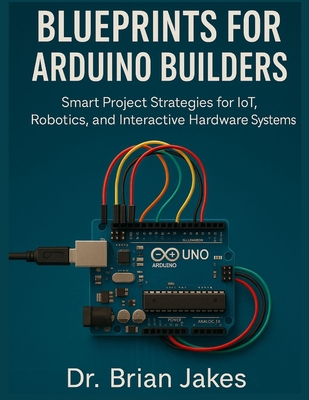Smart Project Strategies for IoT, Robotics, and Interactive Hardware Systems by Dr. Brian Jakes Are you tired of jumping between half-finished Arduino tutorials, inconsistent forums, or YouTube videos that skip the most important steps? Do you want to stop copying and pasting code and finally understand how everything connects-both literally and logically? Whether you're a hands-on hobbyist, a curious student, or a developer aiming to prototype smarter hardware solutions, Blueprints for Arduino Builders was written for someone like you. This book isn't just about blinking LEDs or making servo motors twitch. It's a deeper conversation about why things work, how to structure projects from idea to execution, and what separates a messy breadboard from a scalable, thoughtful system. What Makes This Book Different? We don't just show you what to do-we walk you through why it matters. You'll build, test, and refine real hardware systems while learning essential strategies used by engineers, educators, and DIY innovators alike. You'll stop thinking in terms of "cool projects" and start designing in terms of systems that solve problems. Inside, we cover: Core design patterns for Arduino-based systems, from power regulation to safe wiring strategies. Modular thinking: Learn to break down ideas into reusable hardware/software components. IoT and wireless communication with examples using common radio modules and web-based control. Sensor fusion and decision logic: Go beyond "if this, then that" with more robust input handling. Real-world integration, including power management, environmental feedback, and case design. User interaction and feedback loops through sound, light, and display output systems. Prototyping to production: Transition from breadboard to PCB layout, manufacturing, and testing. Collaboration strategies, including documentation workflows, open sharing, and license models. Ask Yourself This: Do your Arduino projects actually scale, or do they stay tangled in jumper wires and fragile code? When something breaks, do you know where to look first-and more importantly, how to fix it? Are you still relying on copy-paste examples-or are you ready to take control of your design? This book assumes you have a basic understanding of Arduino and electronics, but it bridges that early knowledge into applied confidence. You'll be challenged, supported, and invited to build smarter-not harder. Who This Book Is For: Intermediate builders ready to move from experime











